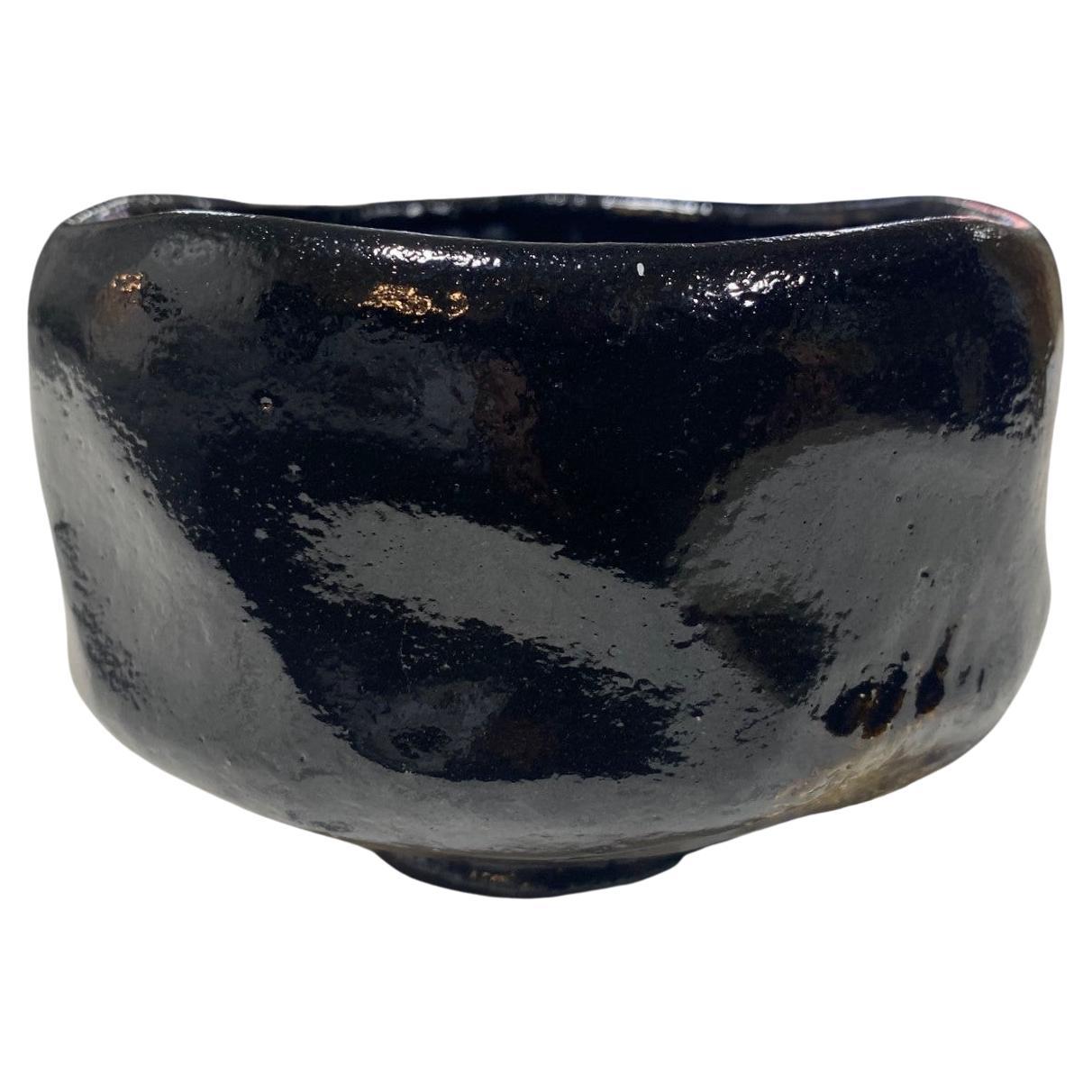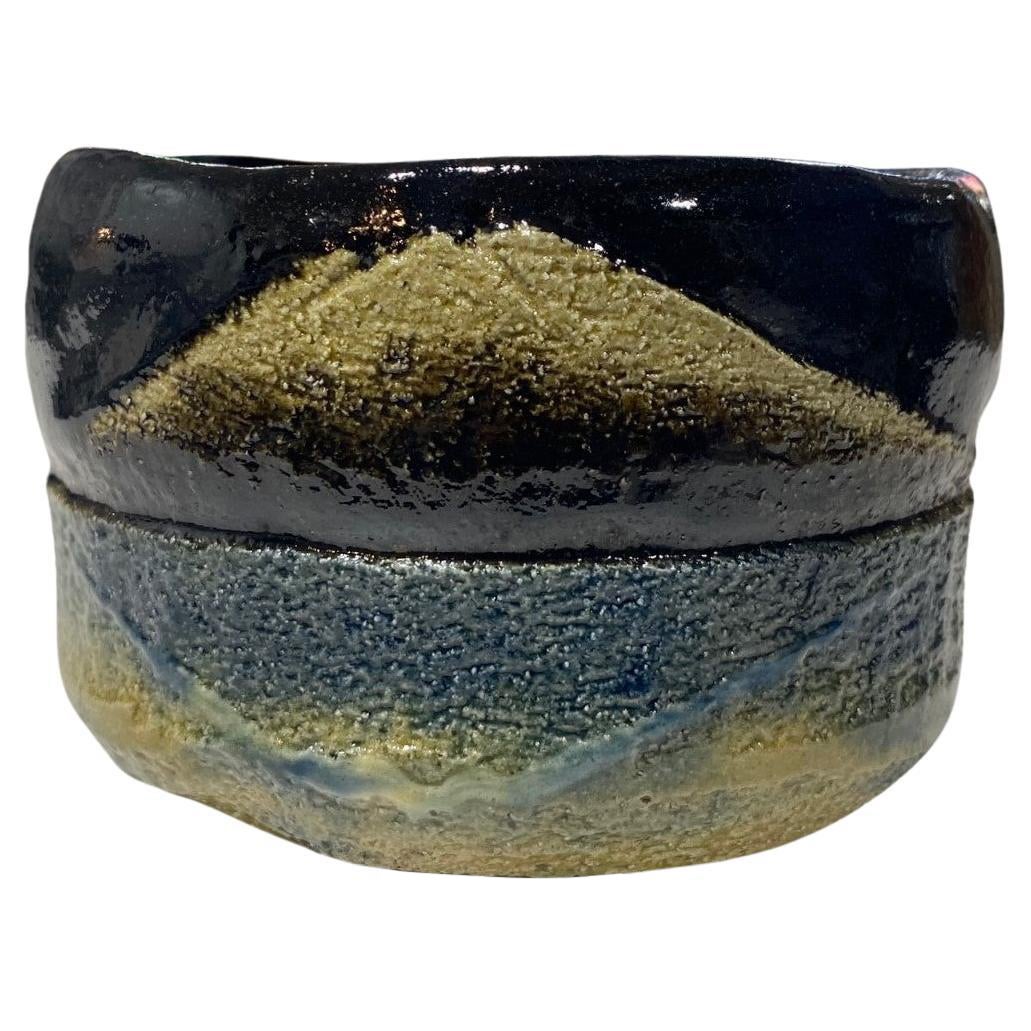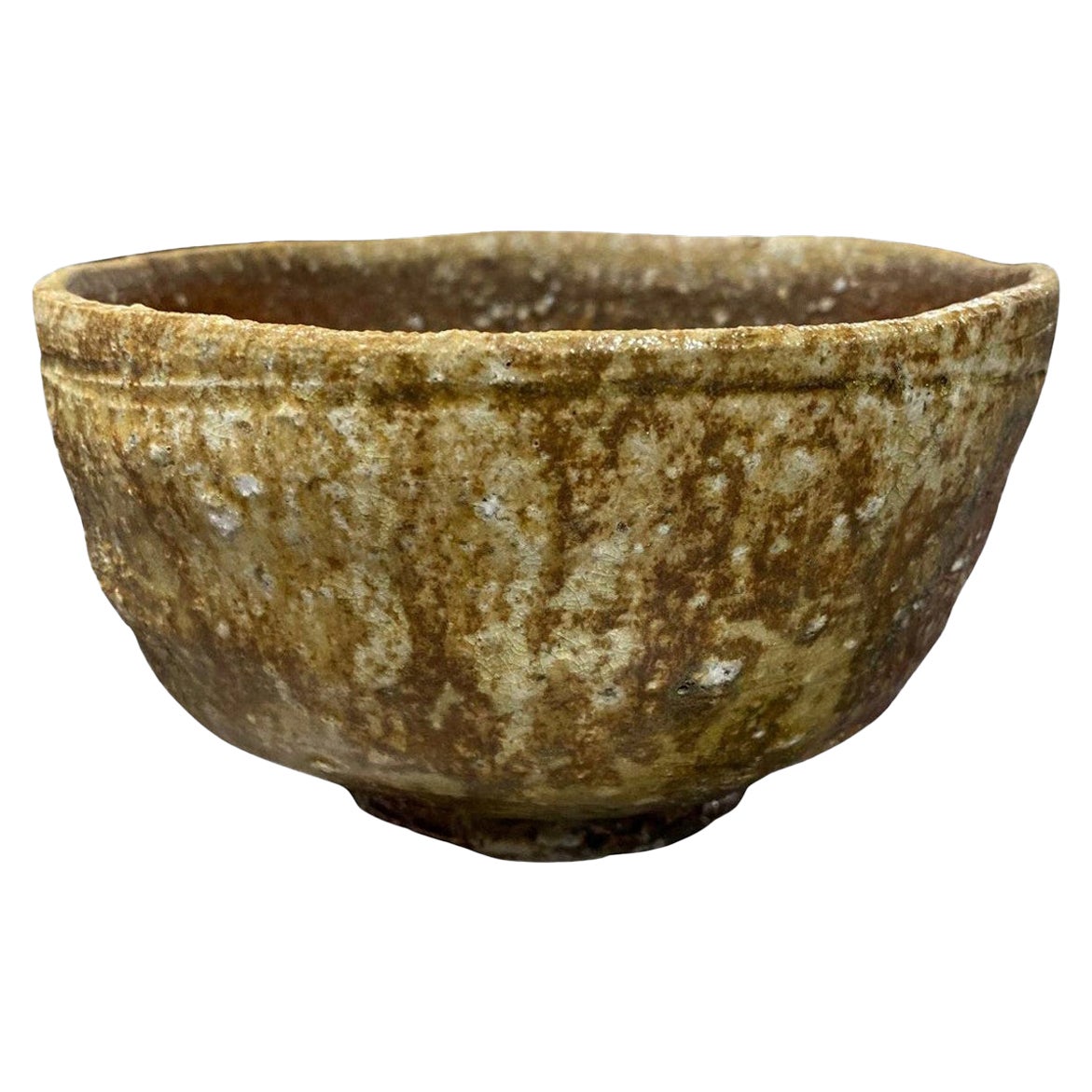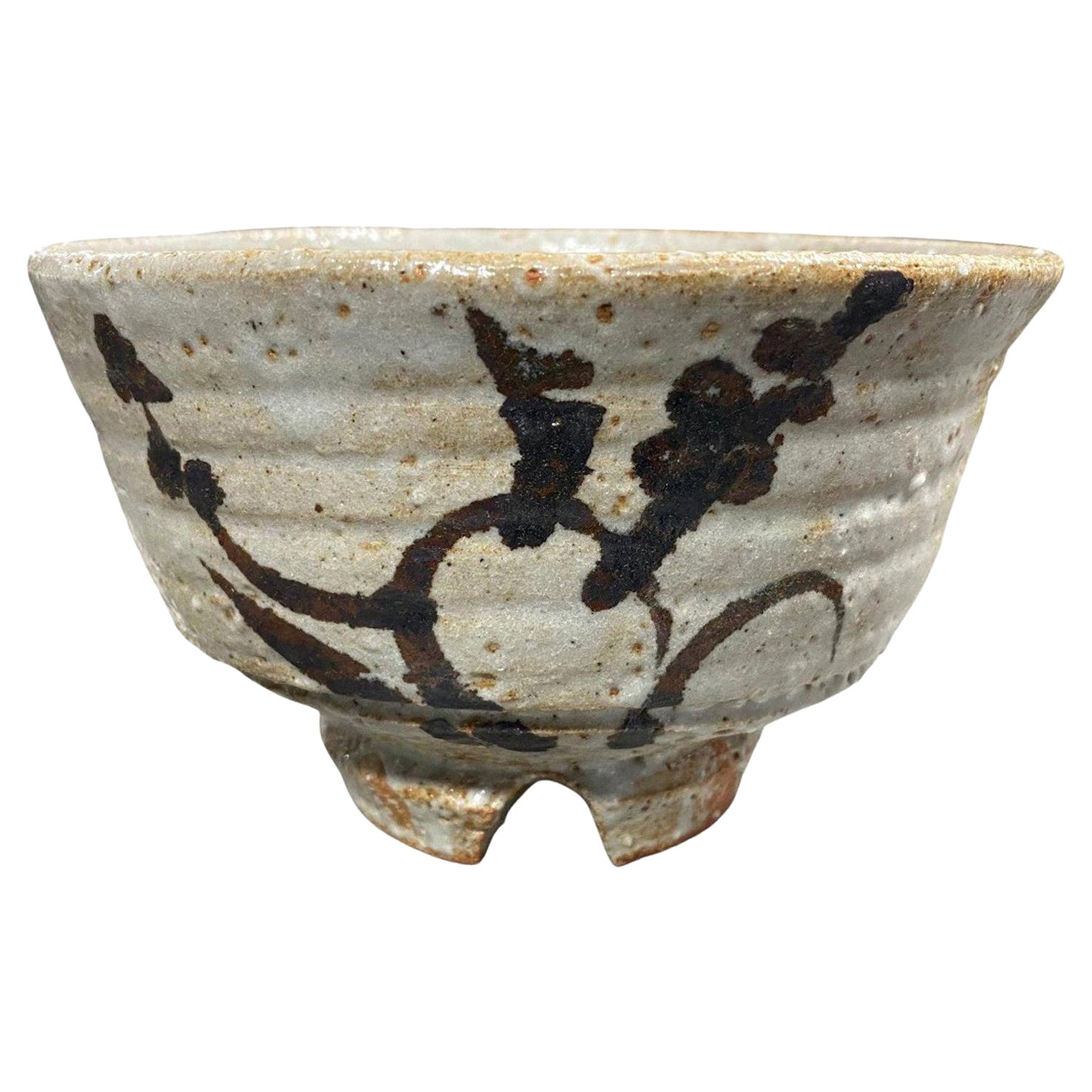Items Similar to Imaemon Chawan Bowl with Signed Box
Want more images or videos?
Request additional images or videos from the seller
1 of 12
Imaemon Chawan Bowl with Signed Box
About the Item
A Beautiful and Rare Imaemon Imaizumi Chawan Bowl
This beautiful and rare Chawan bowl is a stunning example of Japanese craftsmanship. It was created by Imaemon Imaizumi XIII, a renowned Japanese potter who was recognized as a National Important Intangible Cultural Heritage (Living National Treasure) in 1989.
The Chawan is made of high-quality porcelain and is decorated with a traditional Japanese design. It measures 12 x 12 cm H 7 cm (5 x 5 inch H 3 cm) and weighs 200g (0.5 lb) with the box.
The Chawan is in excellent condition and comes with its original signed box. It would be a wonderful addition to any Japanese art or pottery collection.
International Buyers – Please Note:
Import duties, taxes, and charges are not included in the item price or shipping charges. These charges are the buyer's responsibility. Please check with your country's customs office to determine what these additional costs will be prior to bidding/buying.
This beautiful and rare Chawan bowl is a must-have for any Japanese art or pottery collector. Don't miss your chance to own this piece of history!
SKU: MM56
- Dimensions:Height: 3 in (7.62 cm)Width: 5 in (12.7 cm)Depth: 5 in (12.7 cm)
- Materials and Techniques:Porcelain,Japanned
- Place of Origin:
- Period:
- Date of Manufacture:unknown
- Condition:
- Seller Location:Fukuoka, JP
- Reference Number:1stDibs: LU8121235398592
About the Seller
5.0
Vetted Seller
These experienced sellers undergo a comprehensive evaluation by our team of in-house experts.
Established in 1998
1stDibs seller since 2023
33 sales on 1stDibs
Typical response time: 6 hours
- ShippingRetrieving quote...Ships From: Fukuoka, Japan
- Return PolicyA return for this item may be initiated within 7 days of delivery.
More From This SellerView All
- Rare Antique Imari Porcelain Covered Bowl. Edo PeriodLocated in Fukuoka, JPVery Fine and Rare Early Hand-Painted Imari Porcelain Covered Bowl This very fine and rare early hand-painted Imari porcelain-covered bowl is a stunning example of Japanese craftsma...Category
Antique 18th Century Japanese Edo Ceramics
MaterialsCeramic
- Exquisite Hand-Signed Arita Porcelain Vase, Contemporary Masterpiece by YasushiLocated in Fukuoka, JPIntroducing a breathtaking contemporary Japanese vase crafted by the renowned porcelain artist Yasushi, who worked in Arita during the mid t...Category
Late 20th Century Japanese Showa Ceramics
MaterialsPorcelain
- Ichikawa Kouzan Nabeshima Ceramic Vase with Irresistible CharmLocated in Fukuoka, JPCaptivating Nabeshima ceramic vase by Master Artisan Ichikawa Kouzan. Continuing the legacy of 18 generations of ceramics production since the late 16th century. Patronized by Nabeshima Daimyo, a powerful samurai lord, and renowned for unmatched quality and artistic ingenuity. Passed down with secret formulas for generations. Includes signed wooden storage box. Dimensions: H.30cm (11.8 inches), W.9cm (3.54 inches) Weight: 660gr (1.45 lbs) without box, 1.15kg (2.53 lbs) with box Nabeshima ware is a type of Japanese porcelain that originated in the late 17th century during the Edo period. It was produced exclusively for the Nabeshima clan, a powerful feudal lord...Category
Mid-20th Century Ceramics
MaterialsCeramic, Porcelain
- Late Edo Period Teapot by HatamanLocated in Fukuoka, JPThis superb late Edo period porcelain teapot is a masterpiece of Japanese craftsmanship. It was made by the Hataman Touen Corporation in Imari, Sa...Category
Antique 19th Century Japanese Ceramics
MaterialsCeramic, Porcelain
- 20th Century Spectacular Japanese Ceramic VaseLocated in Fukuoka, JPSpectacular large signed ceramic vase with absolutely spectacular colors Size: D 28cm , H.32cm ( 11 / 12.6 inch) Weight: 7.8kg (17.2lb)Category
20th Century Japanese Ceramics
MaterialsCeramic
- Kutani Ware Dragon Dance: A 19th Century Porcelain MasterpieceLocated in Fukuoka, JPThis large 19th-century Kutani ware porcelain plate (SKU: ZD66) is a celebration of Japanese mythology and the timeless art of porcelain-making. Featuring an exuberant scene of drago...Category
Antique 19th Century Japanese Edo Ceramics
MaterialsPorcelain
You May Also Like
- Sasaki Shoraku III Signed Japanese Raku Pottery Chawan Tea Bowl with Signed BoxLocated in Studio City, CAA wonderful Raku-fired pottery Chawan tea bowl by a renowned Japanese pottery master and one of Kyoto’s most prominent and best-known Raku-yaki potters Sasaki Shoraku III (1944- ). The work features a beautifully contoured body and dark rich glaze. The Shoraku line began when the grandfather of the current potter established a kiln near the famous Kiyomizu Temple, nestled at the foot of the eastern mountains...Category
20th Century Japanese Showa Ceramics
MaterialsPottery
- Sasaki Shoraku III Signed Japanese Raku Pottery Chawan Tea Bowl with Signed BoxLocated in Studio City, CAA wonderful Raku-fired pottery Chawan tea bowl by a renowned Japanese pottery master and one of Kyoto’s most prominent and best-known Raku-yaki potters Sasaki Shoraku III (1944- ). The work features a beautiful image of Mount Fuji which is molded on the body. The Shoraku line began when the grandfather of the current potter established a kiln near the famous Kiyomizu Temple, nestled at the foot of the eastern mountains...Category
20th Century Japanese Showa Ceramics
MaterialsPottery
- Rakusai Takahashi III Signed Japanese Shigaraki Pottery Chawan Tea Bowl with BoxBy Takahashi Rakusai IIILocated in Studio City, CAA stunning Shigaraki ware pottery chawan tea bowl by famed Japanese master potter the 3rd Rakusai Takahashi. The bowl features a beautiful, unique natural organic ash glaze with wonderful shifts in colour and texture. Rakusai Takahashi III (1898-1976) is universally considered one of the most important Japanese potters of the 20th century. In 1964 he was named a human cultural treasure and bestowed a Shiga Prefectural Intangible Cultural Property. His work can be found in numerous collections and international museums including the Smithsonian's National Museum of Asian Art, and the Brooklyn Museum to name a couple. Shigaraki Ware pottery comes from Shiga Prefecture, Japan. The kiln there is one of six ancient kilns in Japan (along with Echizen ware, Seto ware, Bizen ware, Tamba ware...Category
Mid-20th Century Japanese Showa Ceramics
MaterialsStoneware
- Rakusai Takahashi III Signed Japanese Shigaraki Pottery Chawan Tea Bowl with BoxBy Takahashi Rakusai IIILocated in Studio City, CAA stunning Shigaraki ware pottery chawan tea bowl by famed Japanese master potter the 3rd Rakusai Takahashi. The bowl features a beautiful, unique natural organic ash glaze with wond...Category
Mid-20th Century Japanese Showa Ceramics
MaterialsStoneware
- Shiko Shikou Munakata Rare Signed Japanese Pottery Chawan Tea Bowl Signed BoxBy Shikou MunakataLocated in Studio City, CAAn exceptionally rare, wonderfully designed Chawan tea bowl by famed Japanese master woodblock printmaker/ artist Shiko Munakata (1903-1975) who is widely considered to be the most important Japanese visual artist of the 20th century and the Pablo Picasso of Japan. This hand-painted work clearly illustrates Munakata's whimsical side as it is of a Koma - a child's spinning top toy. Very few examples of Munakata's work in ceramics exist still today. The work is signed by Munakata on the base as well as the original wood protective storage box (his seal can also be seen faintly in the lower-left corner). The bowl has a small kintsugi or "golden joinery" repair - the Japanese art of repairing broken pottery by mending the areas of breakage with lacquer dusted or mixed with powdered gold - on the inside. As a philosophy, it treats breakage and repair as part of the history of an object, rather than something to disguise. Munakata who is often compared to Picasso was primarily associated with and a principal figure in both the Sosaku-Hanga (which stressed the artist as the sole creator ) and the Mingei (folk art) movements. His many accolades and awards include the "Prize of Excellence" at the Second International Print Exhibition in Lugano, Switzerland in 1952, and first prize at the São Paulo Bienal Exhibition in Brazil in 1955, followed by the Grand Prix Award at the Venice Biennale in 1956, and the Order of Cultural Merit, the highest honor in the arts by the Japanese government in 1970. In 1960 after returning from a year abroad exhibiting his work in the United States, the Horinji Temple in Kyoto bestowed upon him the honorary rank of “Hokkyo”. In 1962, he received the rank of “Hogan” from Nisseki Temple in Toyama prefecture. He also received a Medal of Honor in 1963 and the Asahi Shimbun culture prize in 1965. Munakata's work can be found in numerous international collections and museums including: The Britsih Museum, UK The Chicago Art Institute Museum of Modern Art (MOMA), NY The Metropolitan Museum of Art (The Met), NY The Philadelphia Museum of Art The Smithsonian American Art Museum (SAAM), Washington DC Kemper Art Museum, St. Louis And his own museum The Munakata Shiko...Category
Mid-20th Century Japanese Showa Ceramics
MaterialsCeramic
- Rosanjin Kitaoji Signed Shino Ware Chawan Tea Bowl Original Sealed Signed BoxBy Rosanjin KitaojiLocated in Studio City, CAAn absolutely gorgeous Shino ware pottery Chawan tea bowl by Japanese master potter Kitaoji Rosanjin (1883-1959) who was arguably one of if not the gr...Category
Mid-20th Century Japanese Showa Ceramics
MaterialsCeramic
Recently Viewed
View AllMore Ways To Browse
Meiji Arita
Asian Brown And White Porcelain
Tong Dynasty
Kutani Temple Jar
Crystal Incense Burner
Old Satsuma
Antique Metal Brass Trim Bottle
Japanese White Stork
Blue Gold Imari
Chinese Lotus Plate
Sea Salvage
Song Ware
Satsuma Meiji Plate
Bali Art Deco
Nian Zhi
Blanc De Chine Buddha
Blue And White Armorial Export China
Asian Ceramic Fish Bowl





